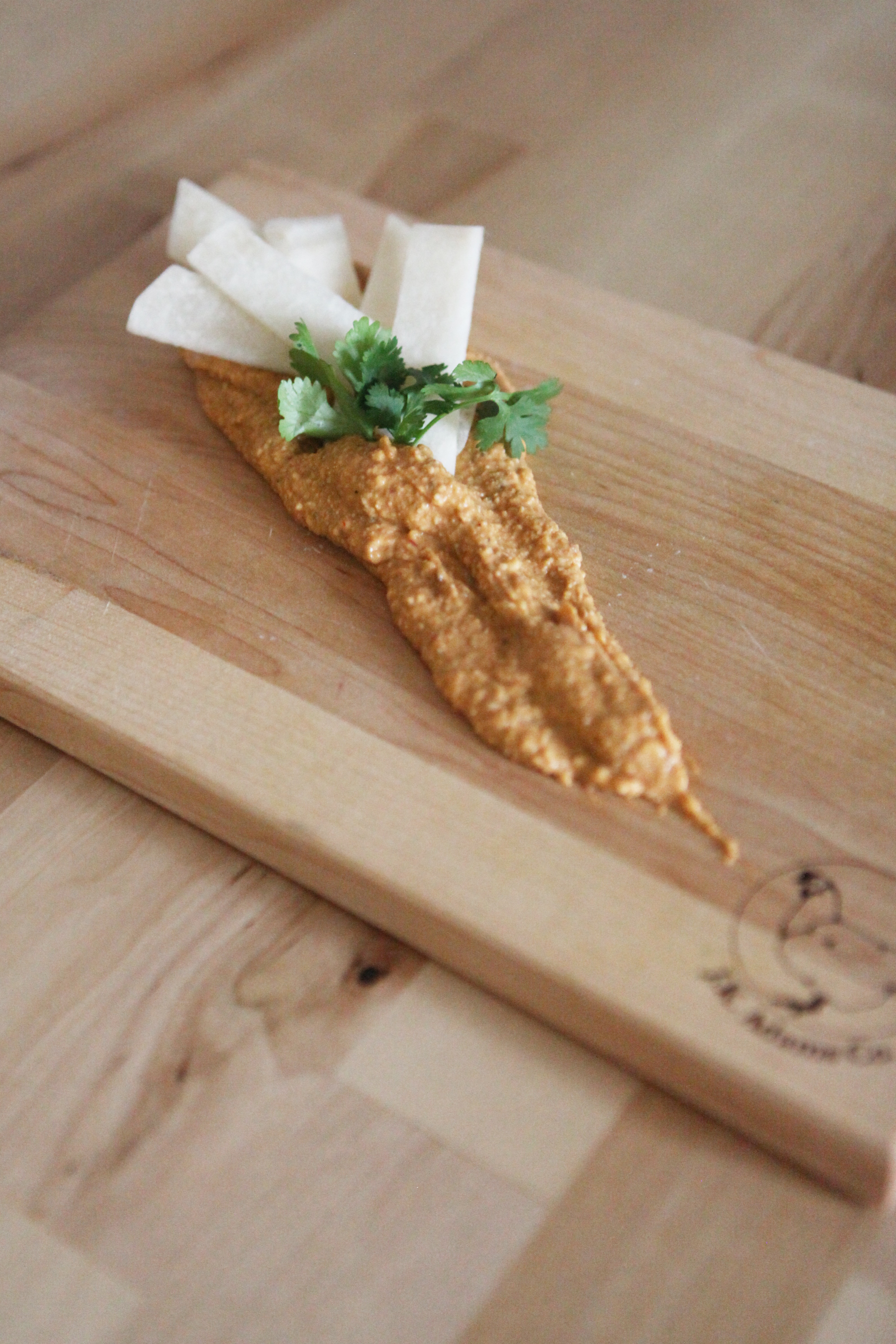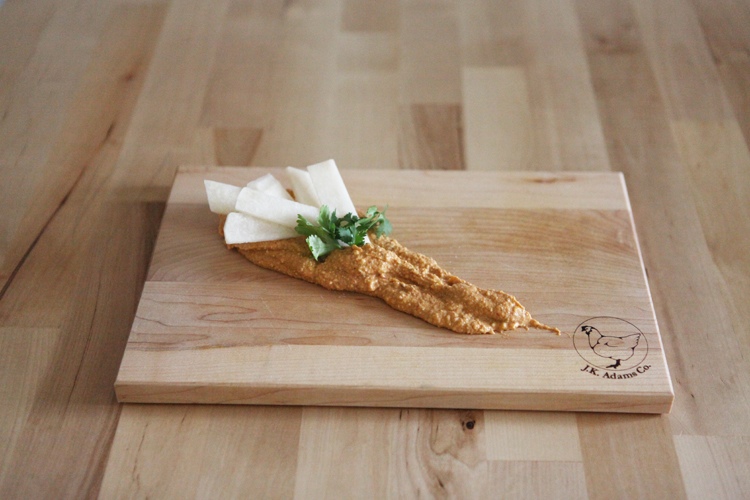
One of the first questions I ask my health coaching clients is, “What’s your blood type?”
Most of them look at me perplexed or confused, and only about 25% know the answer off the top of their head.
“What does blood type have to do with my current health issues?”
According to Dr. Peter D’Adamo, my own health journey, and my experience with health coaching clients over the past 10+ years, a lot.
If you’ve been dealing with digestive issues, autoimmune disorders, skin conditions, chronic fatigue, recurring headaches, or another chronic symptom, it’s likely that a food approach designed for your specific blood type will be helpful.
Our food creates our cells and our blood, so it makes a lot of sense that blood type influences diet.
Here’s an overview of each blood type, plus common health concerns associated with each type:
Type A
- Does well on a vegetarian diet
- Digestive issues are common
- Immune system is strong
- Benefits from routines
- Responds well to yoga and meditation
Type B
- Can be vegetarian or omnivore
- Strong immune and digestive systems
- Often does well with dairy
- Prone to weight gain
- Responds well to vigorous exercise
Type AB
- Can be vegetarian or omnivore
- Digestive issues are common
- Chameleon qualities
- Strong immune system
- Does well with meditation
Type O
- Often requires animal protein
- Strong digestive tract
- Typically does not adapt well to dietary changes
- May be prone to hypothyroidism
- Does well with intense physical activity
Beans are hotly debated in the wellness world, and for good reason:
They’re a great source of plant-based protein and have excellent blood sugar-stabilizing properties, but many people feel weighed down by them and have trouble digesting them.
Those who follow plant-based diets often rely on beans for essential protein, but those following approaches like paleo often abandon beans in favor of animal protein and low-starch vegetables, deterred by the high-starch content and phytic acid lots of beans have.
If you want to eat beans, how can you make them more digestible?
It’s important to cook beans correctly, since most of their toxins and gas-producing elements are released during the cooking process:
- Soak your beans for 8 hours, or overnight, before cooking.
- Strain, rinse well, and transfer to a clean pot.
- Cover with fresh water, plus a few inches at the top.
- Bring them to a boil, then turn them down to low and skim the foam off the top.
- Cook until tender, times vary from 20-60+ minutes, depending on the beans.
Are you curious which beans and legumes may work for you?
According to the Blood Type Diet1, these are the beans and legumes each blood type should include and avoid.
Remember that your body always knows best.
Rather than strictly following a diet, listen to your intuition – and your symptoms – above all else.
If a bean works for you, enjoy it. If it doesn’t, skip it.
Let’s get into which beans work best for the different blood types, according to Dr. Peter D’Adamo’s Blood Type Diet…
Type A
Include aduki beans, black beans, green beans, pinto beans, red soy beans, lentils, black-eyed peas.
Avoid chickpeas, copper beans, kidney beans, lima beans, navy beans, red beans, tamarind beans.
Type B
Include kidney beans, lima beans, navy beans, red beans, cannellini beans.
Avoid aduki beans, black beans, chickpeas, pinto beans, lentils, black-eyed peas.
Type AB
Include navy beans, pinto beans, red beans, red soy beans, green lentils.
Avoid aduki beans, black beans, fava beans, kidney beans, chickpeas, lima beans, black-eyed peas.
Type O
Include aduki beans, pinto beans, black-eyed peas, black beans.
Avoid kidney beans, copper beans, navy beans, tamarind beans, lentils.
There are also a number of beans that are neutral for each type – neither highly beneficial nor detrimental.
Click here to explore the full Blood Type Diet details at Dr. Peter D’Adamo’s website.
Do you enjoy beans and legumes?
Do you get energy from them, or do they leave you feeling weighed down and sleepy?
Leave a comment below and tell me.
Now let’s get into a great white bean appetizer recipe:
Chipotle White Bean + Almond Dip with Jicama Chips
White beans are classified as neutral for most blood types.
This dip is low glycemic and super delicious – the perfect appetizer or snack.

Chipotle White Bean + Almond Dip with Jicama Chips
Ingredients
Serves 6-8
1 jicama root
Juice of 1 lemon
1 cup cooked white beans
¼ cup chipotle peppers in adobo sauce
¼ cup toasted almonds
¼ cup extra virgin olive oil
½ cup – ¾ cup water or vegetable stock
Himalayan Salt, to taste
White pepper, to taste
Cilantro, to garnish
Method
Add white beans, chipotle peppers, almonds, olive oil, Himalayan salt, and white pepper to blender and begin blending on high speed.
Add water or vegetable stock as needed, until creamy consistency is reached.
Peel jicama and slice into chips.
Toss with lemon juice and serve with white bean dip.
Photography: Jake Freeman
References

Really enlightening article Lu! I can have a rough time with legumes sometimes. This explains a lot. Thank you…
Thank you so much!! Yes, it’s super interesting stuff.
Type A + here. Have had beans as a mainstay of my diet for a few years. Was skeptical about the distinction between beans but experimenting repeatedly over time has backed up the Blood Type Diet’s recommendation of sticking to black, pinto, adzuki and avoiding garbanzo, lima, etc. Even with 24 hr pre soak in acidic warm water, chick peas, tragically, just dont work.
How cool! Nice observation. I love chickpeas, so I feel your pain! Keep listening to your body 🙂 Thanks for reading!
I’m type O, but I found a contradiction in type AB.
Type AB: Include navy beans, pinto beans, and lentils. Avoid green beans, peas, and lentils.
Oooh good eye! Probably a typo. I dip into resources like the blood type diet and see if/how they serve me and my clients, but I don’t live by – or recommend – any one diet. And I always recommend checking with your doctor before trying a new eating style. Thanks for commenting!
Could be certain lentils are ok and some aren’t. If you go on D’Adamo’s website there’s more in-depth as to which exactly. Blood type O’s are good with mung dhal, a lentil, but all other lentils are a no go. Blood type AB is ok with just about all lentils except mung dhal.
Thank you for sharing! So cool.
Yes, I believe everyone is a little different and the only way to truly know what works for us is to experiment.
How we feel is what matters.
Thank you for commenting!
Warmly,
Lula
I read from Dr D’Adamo that pinto beans are to avoided by type o.
Interesting! It’s possible it’s changed. I always recommend trusting your body’s responses and how you feel above all else. Thanks for commenting!
I have been looking for discussion of this for years. In my family, it is women who love and eat beans early in life then gradually come to be unable to tolerate them. So the love and habits carry us into the last possible time for eating them. With my mother, d. 2007, it was her late 50’s. For me it was my early 50’s. For my daughter it was her early 40’s. Her daughter, at 24, senses the end coming. It was a mystery until the above granddaughter mentioned the blood type thesis. It holds in our family: the four women with the bean problem are all AB, none of the men, and none of the other women so far. I don’t know all their blood types, but those I know are not AB. And we cannot eat lentils, navy beans or kidney beans, plus all the other dried legumes. Green beans and peas are fine. Peanuts are OK in small quantities. With me, I cannot tolerate green wheat…from Palestine. Thanks for giving us an idea to work with.
My pleasure! This is so fascinating – thank you for sharing, and best wishes on your journey.
I am blood group A plus. I am curious about bean. This is because I eat bea with pap every day. It is my favorite food, it gives me satisfaction.
My question is as a blood group A plus should I be eating beans the way I am currently eating it? Is it going to have any negative effects on my body?
Thank you.
Sylvester Asuenimen.
Hi Sylvester!
As a health coach I can say that it’s always most important to experiment and listen to your body. If the beans feel good in your body, they’re probably good for you – regardless of your blood type. Everyone is a little different, even within blood type groups.
In terms of negative effects (and any medical/nutrition answer you’re looking for) I would definitely recommend checking in with your doctor.
Thank you for commenting!
Please correct this contradiction, if you would!
Quote:
“Type AB: INCLUDE navy beans, pinto beans, and LENTILS. AVOID green beans, peas, and LENTILS.”
(I assume the first “lentils” is the wrong one.)
Cheers!
Thank you! I will. Cheers
Type A and I agree with most of the list. Chicpeas how ever, work well for me. Also a hack for cooked kidney beens in my own experience is in a been salad where they have sat in the vinegar and so forth for a X amount of time to the point they “pickled”.
Very cool! Thank you for sharing.